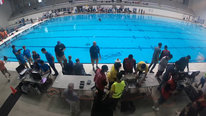- Chelsea Carnes
- https://sites.google.com/view/carnes-portfolio
- Project Specialist
- Guitars, Rocketry, Robotics ATE
- https://www.sfcollege.edu/grrate/
- GRRATE
- Shellie Banfield
- Director, Davis Center
- Guitars, Rocketry, Robotics ATE
- https://www.sfcollege.edu/grrate/
- Santa Fe College
- Cheryl Calhoun
- http://cheryldcalhoun.com/
- Dean of Access & Inclusion
- Guitars, Rocketry, Robotics ATE
- https://www.sfcollege.edu/grrate/
- Santa Fe College, GRRATE
- Latoya Chandler
- Adjunct Professor
- Guitars, Rocketry, Robotics ATE
- https://www.sfcollege.edu/grrate/
- Santa Fe College
- Gina Greenidge
- Watson Center Director
- Guitars, Rocketry, Robotics ATE
- https://www.sfcollege.edu/grrate/
- Santa Fe College
Facilitators’
Choice
Choice
Public Discussion
Continue the discussion of this presentation on the Multiplex. Go to Multiplex











Cheryl Calhoun
Dean of Access & Inclusion
Hello,
I'm Cheryl Calhoun, Dean of Access & Inclusion at Santa Fe College. I am excited to be the PI on this project. We are in our third year and have been granted a fourth year extension. This was a challenging project during COVID-19 due to the hands-on nature of the curriculum. We took advantage of the downtime to review and improve our curriculum, focusing both on the online didactic portion of the course and in improving our culturally responsive pedagogical techniques.
We are considering how to expand this program to increase our reach. We hope to pilot a summer camp program as a way to reach students earlier and help them prepare for entry into STEM technician careers. We'd also like to collaborate with other institutions to explore how to better reach traditionally undeserved and underrepresented students in STEM fields.
Here are some questions for thought and discussion:
Kara Dawson
Chelsea Carnes
Yolanda Abel
Associate Professor
Cheryl, what was one of the things the project did to improve its culturally responsive pedagogical techniques? What was most effective?
Chelsea Carnes
Project Specialist
I'm the project specialist for the GRRATE Project and also one of the STEM guitar-build instructors. My favorite thing about the GRRATE project is how it uses a creative STEAM approach to teaching technical skills. I like seeing my students make creative design choices about their projects and then problem solve and learn new tools and skills to create. So many of the skills they learn are practical outside of the classroom in work and life as well. I'm proud of the work we do and happy to chat or answer questions with anyone who'd like to learn more!
Kimberly Elliott
Latoya Chandler
Adjunct Professor
Hello,
I’m LaToya Chandler, a Faculty member for the GRAATE Project in Robotics and Rocketry. I think that COVID-19 brought on a unique opportunity for learning and exploring STEM. This year’s hybrid design of the course allowed us to create a learning community that keeps our students connected and supported in their progression through the GRAATE experience. With students spending most of their time apart, it was important to keep them working together collaboratively both face-to-face and online while exploring the technology, the skills and the careers related to Robotics and Rocketry.
What’s special about this project is that students get a variety of experiences exploring, designing and building solutions to solve real-life problems. There is a critical thinking component that thrives on active involvement in dialogue and exploring by doing hands-on work. Students get to actually use their skills learned from this experience and determine where their skills can be integrated in practical projects as well as in STEM careers. It’s a unique program that guides students in developing their interests in STEM through exploration. This experience places students in a position to think, research and explore new ways that their personal strengths and identities can contribute to STEM career fields.
Kimberly Elliott
Chelsea Carnes
Megan Davis
Wow, what amazing projects and what an amazing program! Since I live in "Music City USA" the guitars your participants made naturally grabbed my attention (would you share your lesson plans for that?), but every project looks stimulating, challenging and fun. Love that you reached rural audiences, too. I know that's tough to do.
This video is so well-made (love the tools montage) that it's getting my vote in Presenter's Choice!
Christie Prout
Chelsea Carnes
Chelsea Carnes
Project Specialist
Thank you, Megan! The guitar build is a 15 week curriculum building off of work by another ATE project, Sinclair College's STEM Guitar Project. The STEM Guitar project has lesson plans and also offers PD trainings, you can access it here: http://guitarbuilding.org/
Debra Bernstein
What a great project! Thank you for sharing this video, with the fabulous images of products students have made!
One of the challenges I've often found with interdisciplinary projects (in my own work) is how to determine what students are learning - how have you handled that here?
Chelsea Carnes
Chelsea Carnes
Project Specialist
Hi Debra, thanks for your interest! Every lesson in our curriculum is attached to specific learning objectives. Through project outcomes, quizzes, and class discussions it becomes fairly obvious whether or not students are learning the skills we are aiming to teach. Beyond skill-sharpening, we are also out to change students attitudes about STEM and to increase their interest and exposure to technical careers. We measure this outcome through the S-STEM Survey which we administer as a pre and post test before and after the course.
Kimberly Elliott
Cheryl Calhoun
Dean of Access & Inclusion
In addition to the interdisciplinary challenge was the alignment of learning outcomes across projects. We developed a grid of our core learning outcomes to make sure they were incorporated in each of the hands-on projects.
Daniel Serrano
What an awesome project!
I'd be curious to learn more about how you identified relevant local employers, and established and continued relationships with them.
Would also love to know specifics about the feminist and anti-racist frameworks you used in the project.
Christie Prout
Chelsea Carnes
Cheryl Calhoun
Dean of Access & Inclusion
At Santa Fe College we have industry advisory committees for all of our Career & Technical Education (CTE) programs. When we launched the GRRATE project our local chamber of commerce had an Advanced Manufacturing Taskforce which provided guidance and early input on the project. We then assembled a project steering committee consisting of subject matter experts, including CTE faculty, local employers, and school board representatives which provided guidance on the curriculum development portion of the project. Our chamber of commerce is still actively involved on our GRRATE Advisory Committee and has helped us to connect to relevant employers as the project progresses.
Yolanda Abel
Christie Prout
Chelsea Carnes
Chelsea Carnes
Project Specialist
Hi Daniel, great questions! Our PI team identified a handful of local employers in technical industries in our area and asked them for representatives to participate in our annual advisory committee meetings. This group includes a representative from the Gainesville Chamber of Commerce as well as individuals from industry, educators from the local schoolboard, and administrators from our community college. As far as feminist and anti-racist frameworks-we put a lot of intention and time into professional development for the faculty that teach this course, seeking out conferences and summits that use feminist and anti-racist pedagogy to influence culturally responsive teaching. In my own experiences teaching project based learning (PBL) courses , I've found that it is easy to get swept up in focusing on the PROJECT while neglecting the PEDAGOGY. We realized quickly that no matter how cool and engaging the PBL project is, if it is taught by a faculty person who inflicts microagressions, has a fixed mindset, is unaware of their privilege and bias, doesn't include diverse representation, etc. it can fall flat with the students that we aim to serve. Having a diverse faculty team well-versed in inclusivity tactics can be as or even more effective than the shiny projects we offer that initially draw students into the program.
Alex DeCiccio
Daniel Serrano
Thanks for the detailed responses, Cheryl and Chelsea.
I have some projects in mind that will require connections with local employees and hadn't thought about the camber of commerce as a central link. This is very useful!
Chelsea Carnes
Yolanda Abel
Alex DeCiccio
Great work here and thanks for both prompting and addressing this notion of needing diverse faculty, empowered with professional development related to anti racist and feminist framework, to bring intention into the the lived experiences of others. Really inspiring.
Chelsea Carnes
Shellie Banfield
Director, Davis Center
We've been inspired by other projects that we have seen over the years and wanted to be sure to include the inspirational quality to this work. We inspire students to try new things through this course and we'll be able to see the results of this work in the years ahead!
Jennifer Mullis
Awesome project and great video!
Chelsea Carnes
Shellie Banfield
Director, Davis Center
Thank you Jennifer... this video used many of our classroom photos and you can see the pride in the students as they work on their projects. They really take ownership of their work!
Kwame Owusu-Daaku
Such a great project and great video. I love the integration of music, rockets, and robotics.
Chelsea Carnes
Shellie Banfield
Director, Davis Center
I agree... This project based learning classroom is the perfect way to get students really involved in their learning. Attendance for these classes is exceptional because students really want to work on their guitar, robot, or rocket and don't want to miss anything. Students are also building their communication skills as they work together sharing ideas, assisting each other, and problem solving throughout the semester. You can see students' confidence build each week. I am so happy to be a part of this grant project. I see the positives everyday for our students.
Chelsea Carnes
Ning Wang
Very cool project! I think it is a very engaging method.
Chelsea Carnes
Shellie Banfield
Director, Davis Center
Positive experiences for our students help connect them to the learning. It has been exciting and enriching to see student's learn and grow in this hands on learning project.
shellie banfield
Thank you for your comments. The students really take ownership of their projects because of the time and attention each project requires. It is so rewarding to see students work collaboratively. Project based learning immerses students in the curriculum and students gain confidence in their problem solving skills.
Romelia Rodriguez
It is a great project. It was interesting to know how you organized your PBL and how your transition to online learning was. You were prepared to do so!
Chelsea Carnes
Cheryl Calhoun
Dean of Access & Inclusion
What amazed me is the students that came back to campus after the semester was over to complete their projects. Even though they'd already be assigned a grade for the class, they were motivated enough to still complete the project.
Katherine Mortimer
Exciting work! I was especially excited to hear that you included feminist and anti-racist theory in your professional development, and I'd love to hear a bit about how you integrated it and how you've seen it show up in the implementation of the course.
Daniel Serrano
Chelsea Carnes
Chelsea Carnes
Project Specialist
Thanks, Katherine! First, let me mention some of the highly effective trainings we attended: The Racial Equity Institute's Groundwater and Phase I trainings (https://www.racialequityinstitute.com/), The Inclusive STEM & CS Summit (https://www.inclusivestemcs.com/), and Diversity Edu's online trainings for faculty and staff (https://diversityedu.com/). We have also developed a culture of sharing articles & news on the topics of inclusion, diversity, equity, and accessibility and talking as a team about these issues. It helps that our PI, Cheryl Calhoun, is the college's Dean of Access & Inclusion, and that our leadership team is woman-led and racially diverse. A few examples of what this pedagogy looks like in application: 1) making space for diverse representation in the classroom. For example, I may be a white woman, but when I talk about the history of guitar design I talk about Bo Diddley and show examples of his hand crafted guitars, if I pull supplementary videos from online into the course, I prioritize content that includes people of color, etc. 2) relying on my growth mindset training when I offer praise to students in the classroom and when grading. Praising students for growth and learning, for failing and then finding workarounds, for persistence, rather than "natural talent" or smarts. 3) Avoiding bias and microagressions in my language and actions in the classroom, recognizing that students may be facing stereotype threat and that the way I talk to them and treat them can make their experience better or worse. Giving lots of indidivual attention to my students and showing them that I value their input and that their life experiences, backgrounds, and diverse identities are a strength to our classroom. These are just a few examples, but I do find that these tactics help students gain a sense of belonging as the semester progresses.
Yolanda Abel
Joselina Cheng
Professor
Bravo for giving individual attention to students and showing appreciation for their valuable input and life experiences, backgrounds, and diverse identities. Any pedagogical approach(es) for addressing gender equity? Thanks in advance for sharing.
Chelsea Carnes
Chelsea Carnes
Project Specialist
Thank you, Joselina. Our approach to gender equity in the classroom is much the same as what I described above for racial equity: representation and culturally responsive generative themes, growth mindset praise, compensation for stereotype threat and implicit bias, awareness of privilege and power dynamics, etc. For example, when teaching guitar design history, I talk about Sister Rosetta Tharpe's role in popularizing the electric guitar and St. Vincent's modern guitar design that is meant to better fit curvy bodies. The fact that 3/4 of our faculty are women makes a big impact on stereotype threat too-it is helpful for my female students to be taught by a woman who has built several guitars. That representation provides immediate evidence to students that gender plays no role in a person's success in completing the guitar build.
Rebecca Bullard-Dillard
Wow, a very creative project (and no, I didn't mean that as a pun). I am no longer surprised (after so many years teaching) at how often students and others attracted to STEM also have musical interests and talents.
Chelsea Carnes
Shellie Banfield
Director, Davis Center
We have found many ways to add artistic elements to each project. When students personalize their projects in this way they connect even more to the guitar, or rocket, or robot. They take pride in their project and share creative ideas with classmates to enrich other student's work.
Gerhard Salinger
Former Program Officer (NSF)
Your project is very well presented and has attracted a lot of attention. Have you been able to collect data on how the course impacts student both in the short run and in their job placement? The impacts of your attention to microaggressions and diversity should be documented and the results disseminated.
Chelsea Carnes
Cheryl Calhoun
Dean of Access & Inclusion
For this project, we built in a pre/post survey looking at attitudes towards Math, Science, Technology and Engineering. We also ask questions about their future career intentions. Unfortunately COVID interrupted the data collection. We're now back on track with a solid spring semester data collection. We should have some results to publish soon.
For our next project, we'd like to incorporate a longer view following up with both student academic progress and job placement. We're collaborating with Career & Technical Programs to incorporate the course into their degree programs which will also help us to develop a longer term view of impacts.
Lance Bush
Hands-on projects and especially the ones you selected seem to really resonate with the students. This is a fantastic project. Like you, we have great interactions with the students, and provide informal learning to augment their classroom lessons, and so work hard to assess our impact and improve. Would like to hear more about the S-STEM Attitudinal survey as a tool.
Christie Prout
Chelsea Carnes
Kara Dawson
What a wonderful project!! I appreciate the attention to rural and underserved populations as well as the choice provided. Have the 10 faculty you trained continued to implement UDL and culturally responsive practices in their "regular" courses. Great work!!
Gina Greenidge
Chelsea Carnes
Chelsea Carnes
Project Specialist
Thanks, Kara. That is a good question. Our external evaluator, Susan Warshaw, is actually working on setting up a focus group for our staff to share our experiences working on the project over the past three years, and I imagine we will be able to answer this question accurately following that discussion. As an instructor in the project, I can speak for myself that the PD I experienced in this project informs my teaching in all subjects moving forward.
Candice Woods
Amazing program! From the video, it appears that you are engaging high school students. Have you thought about adapting your program to elementary and middle school learners to introduce entry level STEM skills at a younger age?
Chelsea Carnes
Chelsea Carnes
Project Specialist
Thanks, Candice. Most of our students are community college students, some are dual enrolled high schoolers. We did offer a pilot summer camp version of this curriculum in 2019 to 60 Upward Bound high schoolers as well. This summer, we are providing an abbreviated summer camp version of the curriculum for high schoolers through our city's housing authority summer program. We have offered demonstrations based on our curriculae at science fair type events for k-8 (a science fair, a girl scout STEM event at the natural history museum, and a Girls Rock Camp summer program), but we are yet to try the full 15 week curriculum out on pre-high school students. It would require significant modification to do so, but I think it could be adapted to work well for K-8.
Candice Woods
Alex DeCiccio
What a great model this team has developed. Have other schools reached out about developing similar programming or looking to your group for training? Seems like it would be a lot of fun to be part of this!
Chelsea Carnes
Chelsea Carnes
Project Specialist
Thanks, Alex. We have a few ideas for sharing the best practices we've learned over the last 3 years of this project with other schools. We are currently working on a second grant application that would allow us to expand the project to other colleges. If that grant is successful we hope to scale up to provide professional development to other educators so that our curricula can be shared.
Gina Greenidge
Watson Center Director
Hello,
I'm Dr. Gina Greenidge, and I am a co-PI on the GRRATE project. I also serve as the Director of the Watson Center and the Andrews Center at Santa Fe College with both offer students the opportunity to participate in the GRRATE program.
While COVID-19 proved to be an initial challenge, it ultimately gave our project the opportunity to strengthen ways to deliver information online. We found ways to engage with students through smaller class-sizes and different forms of technology. The addition of a black female faculty member with a strong background in technology, curriculum, and design has also strengthen how content was delivered to students.
Chelsea Carnes
Adrienne Smith
Wow - I am really impressed with the different frameworks you have been able to incorporate. We are operating in a rural setting and I wanted to learn more about the process you have used to involve local industry partners. You also mentioned marketing in your videos and it would be great if you could speak to any lessons learning in preparing promotional materials about your project. Thanks!
Shellie Banfield
Director, Davis Center
Adrienne, please visit our webpage for a look at this project and if you'd like further information you can email our project specialist. https://www.sfcollege.edu/grrate/index
Susan Warshaw
I like this project because it is unique! What makes it unique is the way it integrates the development of spacial awareness and creativity to build student self confidence in STEM learning.
John Casebolt
I love the projects included here. Thank you for the idea of combining different directions for students to engage in their individual interests. Great presentation
Avinanda Mukherjee
Wow, what amazing projects and what an amazing program! Great to learn that you included feminist and anti-racist theory as a part of professional development for faculty and administrators of your program!